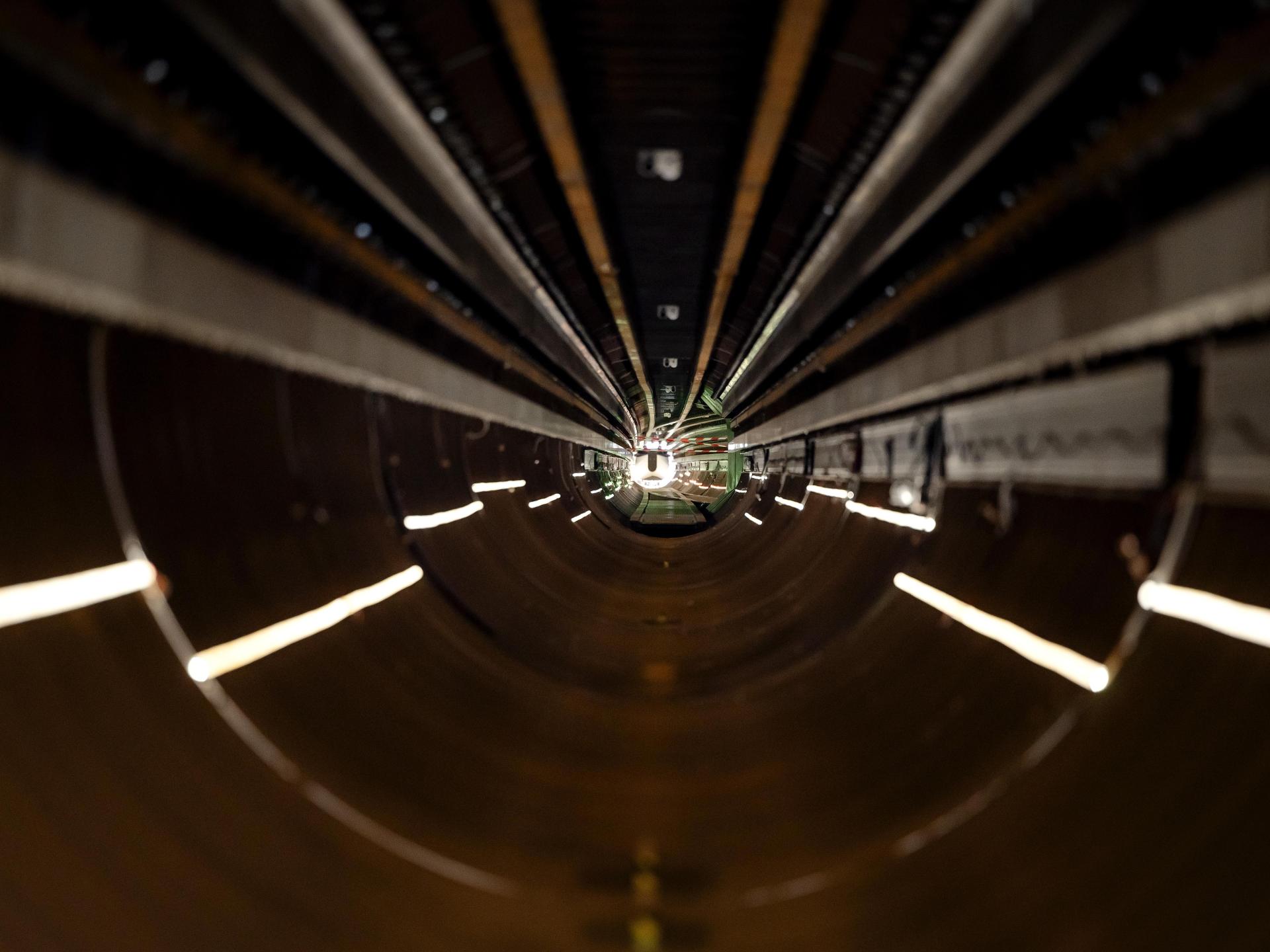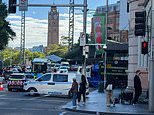
Taipei, Taiwan – Imagine boarding a train that glides above the ground at supersonic speeds.
Speeding through an airless tube using powerful electro-magnets, passengers could travel from San Francisco to Los Angeles, London to Paris, or Basra to Baghdad in less than an hour.
The train would be potentially greener than existing modes of transportation, too, using electricity that could be drawn from renewable energy sources.
While it may sound like the stuff of science fiction, scientists and engineers in multiple countries are working on making the concept of the so-called hyperloop a reality.
Hyperloop proponents, who include tech billionaire Elon Musk, have announced a series of recent breakthroughs in progressing the technology, whose development has been plagued by commercial setbacks and doubts about its feasibility.
“Now we’re getting closer to making it a reality,” Jonas Kristiansen Nøland, an associate professor at the Norwegian University of Science and Technology who researches zero-emission propulsion systems, told Al Jazeera.

Last week, Netherlands-based hyperloop company Hardt announced its first successful test run of a vehicle at its European Hyperloop Centre in Veendam.
Hardt said its test vehicle traversed the first 90 metres (295 ft) of the 420-metre (1378-ft) long facility at about 30 kilometres per hour (19 miles per hour), and that it hopes to reach 100km/h (62 miles/h) in its next test scheduled for later this year.
In August, China Aerospace Science and Industry Corporation (CASIC), a Chinese state-run enterprise, reported that it had successfully propelled a prototype bullet train through a 2km (1.2-miles) long low-vacuum tube with “controlled navigation, stable suspension and safe stopping.”
CASIC’s announcement came after the company in February claimed to have reached a record top speed exceeding 620 km/h (385 miles/h) in a test run of a vehicle in a low-vacuum tube.
“It is quite extraordinary that they were able to reach such a speed,” Nøland said.
Jonathan Couldrick, an associate professor at the Australian National University College of Engineering, Computing and Cybernetics, said that a functioning hyperloop could vastly improve urban transportation.
“If you have two population centres across a large landmass that you need to link up, this technology could be the fastest way to get them from point A to point B,” he told Al Jazeera.
“Or in the case of a capital city that is starting to reach its limits – with people commuting two hours every day – then you can really spur population development outside the city even in remote communities.”
A handful of maglev trains, which use electromagnets to float above the tracks, have been put into operation worldwide, including in China, Japan and South Korea.
The hyperloop concept builds on maglev technology by proposing the use of depressurised tubes to reduce drag and boost the vehicle’s speed.

“With this type of system, you are basically trying to take the conditions of outer space and put them down on Earth,” Nøland said.
The basic concept of the hyperloop has existed for at least several hundred years, appearing in science fiction as far back as the 1800s.
In 2013, SpaceX founder and Tesla CEO Elon Musk released a white paper for a transportation system that would use capsules inside a low-pressure tube.
Musk’s paper theorised that such a system would be able to transport people, vehicles, and freight between Los Angeles and San Francisco at speeds of up to 1,220km/h (758 miles/h) an hour, slashing journeys to just 35 minutes.
In 2014, the company Hyperloop One was founded to develop the concept into a working transport system.
Despite attracting some $400m in funding and the backing of Virgin founder Richard Branson, the company shut down last year after investors began fleeing the project amid logistical challenges and concerns about the project’s feasibility.
“They burned a lot of cash rediscovering knowledge going back to the 1970s, and there was a lot of switching between different basic technologies for the system,” Nøland said.
Couldrick said that although CASIC’s proposed maglev is better insulated against investor flight due to its state backing, it is also likely to face hard questions and difficult challenges down the road.
Couldrick said that scaling up the system will require hundreds of kilometres of low vacuum tubes, with any breach or a crack posing the risk of compromising the whole system.
With hyperloop proponents envisaging top speeds of above 1,000 km/h, even a small flaw could set the stage for a high-speed disaster.
“And what happens if something hits it, or it is exposed to earth movements?” Couldrick told Al Jazeera.
Even if such risks are addressed, Couldrick said he has doubts about the technology given the limits that must be placed on any accelerating vehicle when human bodies are involved.
“Conversations are starting to be had whether maglevs could potentially reach high supersonic speeds (up to 4,000km/h) [2,485 miles/h],” Couldrick said.
“It is not speed that kills people, it is the acceleration that occurs when you start, stop and turn a corner,” he said.
Couldrick estimates that, to account for the acceleration that an average person can withstand, a vehicle would need hundreds of kilometres to accelerate to supersonic speeds and the same distance to decelerate.
While Couldrick sees rail technology making strides and believes supersonic rail has potential, he believes it will be a long time before maglev trains in low-vacuum tubes will be able to match air travel for speed or flexibility.

Nøland said that the lack of knowledge sharing is another major hindrance to overcoming the challenges facing the development of a functioning hyperloop.
“Right now, a lot of the vital knowledge needed to take us to the next step is behind closed doors,” he said.
Nøland believes that if a workable hyperloop maglev system does get developed, it will likely happen in East Asia.
“They already have experience with operating open-air maglev systems in that part of the world, and governments have also proved more willing to fund projects,” Nøland said.
While the initial hype around hyperloop systems has waned, the fact that the concept is still being pursued in multiple parts of the world has Nøland convinced that a working model is drawing closer.
“I think we will eventually see this technology play a role in the future,” he said.
“It is just a matter of where it will first emerge as a competitive alternative.”







